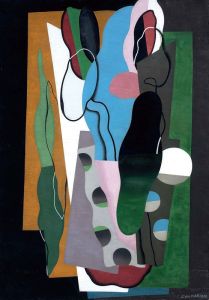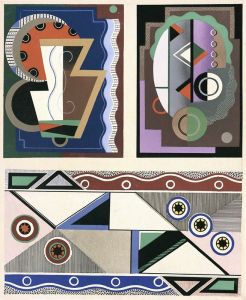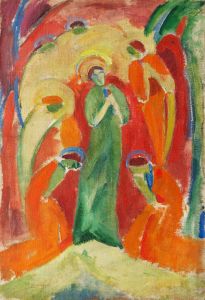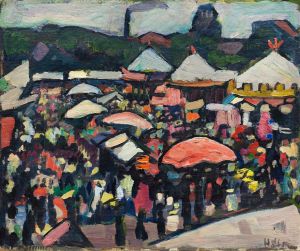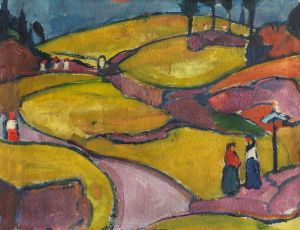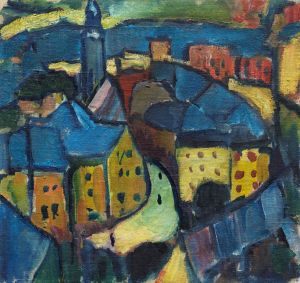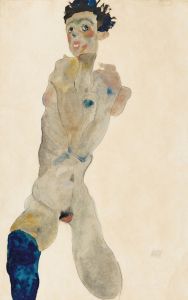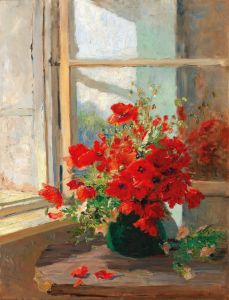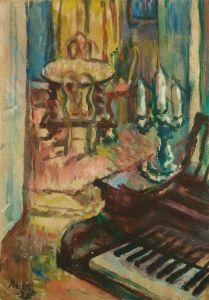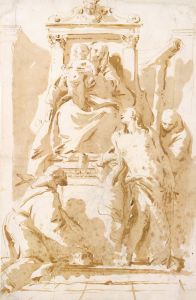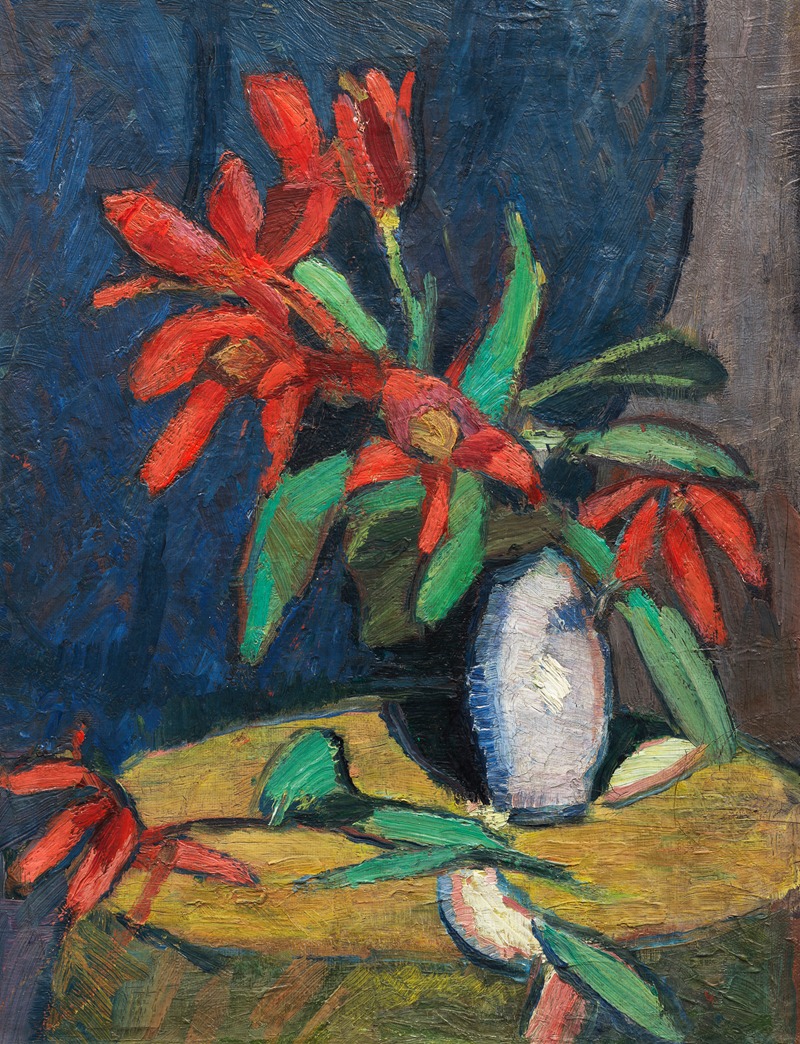
Rote Blumen in weißem Krug
A hand-painted replica of Hermann Stenner’s masterpiece Rote Blumen in weißem Krug, meticulously crafted by professional artists to capture the true essence of the original. Each piece is created with museum-quality canvas and rare mineral pigments, carefully painted by experienced artists with delicate brushstrokes and rich, layered colors to perfectly recreate the texture of the original artwork. Unlike machine-printed reproductions, this hand-painted version brings the painting to life, infused with the artist’s emotions and skill in every stroke. Whether for personal collection or home decoration, it instantly elevates the artistic atmosphere of any space.
Hermann Stenner (1891–1914) was a German Expressionist painter whose career was tragically cut short during World War I. Among his notable works is the painting "Rote Blumen in weißem Krug" (translated as "Red Flowers in a White Jug"). This artwork exemplifies Stenner's distinctive style, which was influenced by the Expressionist movement and his studies under prominent artists of the time.
"Rote Blumen in weißem Krug" is a still-life painting that showcases Stenner's mastery of color and form. The composition features a white jug filled with vibrant red flowers, set against a background that emphasizes the contrast between the subject and its surroundings. The use of bold, expressive brushstrokes and a vivid color palette reflects the influence of modern art movements, particularly Expressionism, which sought to convey emotional intensity and subjective experience.
Stenner created this painting during a period of intense artistic productivity in his short life. He studied at the Academy of Fine Arts in Stuttgart and later in Munich, where he was mentored by Adolf Hölzel, a pioneer of abstract art. Hölzel's teachings on color theory and composition had a significant impact on Stenner's artistic development. Stenner also participated in exhibitions alongside other Expressionist artists, gaining recognition for his innovative approach to painting.
The exact date of "Rote Blumen in weißem Krug" is not definitively documented, but it is believed to have been painted during the early 1910s, a time when Stenner was actively exploring still-life subjects and experimenting with color and form. This painting is considered a fine example of his ability to infuse everyday objects with a sense of vitality and emotional resonance.
Hermann Stenner's promising career was tragically ended when he was killed in action during World War I at the age of 23. Despite his brief life, he left behind a significant body of work that continues to be celebrated for its contribution to early 20th-century art. "Rote Blumen in weißem Krug" remains an enduring testament to his talent and artistic vision.
The painting is held in a private collection or museum, though specific details about its current location or provenance are not widely documented. It is occasionally featured in exhibitions that highlight Stenner's work or the broader Expressionist movement.





